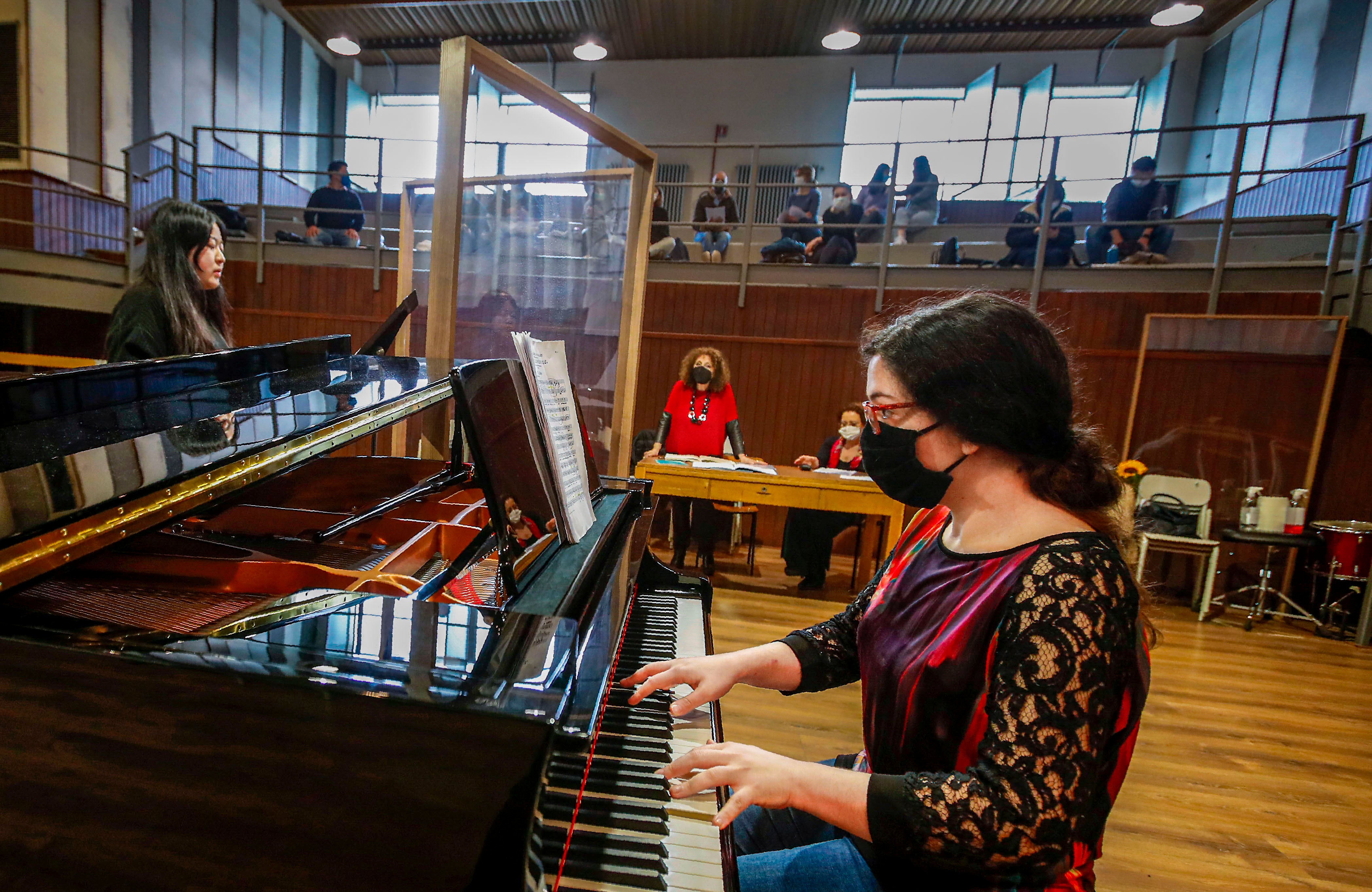AP PHOTOS: Playing on at Italy's oldest music conservatory
The pandemic, which struck Lombardy first in Italy, and Italy first in the West, cast the 1,700 students of the Giuseppe Verdi Music Conservatory in Milan asunder

Your support helps us to tell the story
From reproductive rights to climate change to Big Tech, The Independent is on the ground when the story is developing. Whether it's investigating the financials of Elon Musk's pro-Trump PAC or producing our latest documentary, 'The A Word', which shines a light on the American women fighting for reproductive rights, we know how important it is to parse out the facts from the messaging.
At such a critical moment in US history, we need reporters on the ground. Your donation allows us to keep sending journalists to speak to both sides of the story.
The Independent is trusted by Americans across the entire political spectrum. And unlike many other quality news outlets, we choose not to lock Americans out of our reporting and analysis with paywalls. We believe quality journalism should be available to everyone, paid for by those who can afford it.
Your support makes all the difference.Before the pandemic, students at Italy s oldest and largest music conservatory were always told to move “closer, closer, closer” when they played together.
“Because you need to hear each other,'' said Cristina Frosini, director of the Giuseppe Verdi Music Conservatory in Milan ”Even at a meter's distance, it is harder to play together.”
In its 213 years, the conservatory has turned out talents including composer Giacomo Puccini, and conductors Claudio Abbado, Riccardo Muti, and Riccardo Chailly.
The pandemic, which struck Lombardy first in Italy, and Italy first in the West, cast the 1,700 students asunder. For the first months of total lockdown, they could only follow classes online.
When they returned to in-person instrumental instruction a year ago, students had to adjust to both distancing and playing behind plexiglass, whatever the instrument — flute, violin, piano, drums. Frosini said the safety measures worked: There have been only five cases of COVID-19 among students playing together.
“The students were happy because it was the only way to make music and be together. Psychologically, it was very important,’’ Frosini said. But musically, it has been challenging.
The adjustment was more difficult for the orchestras or chamber music groups, when the plexiglass dividers and the distancing rules meant it was difficult to hear the other musicians.
"When playing together, you need to be together, breathe together," Frosini said.
And it wasn’t just the physical distancing that was hard. It was also the absence of audiences.
“We made a recording during the period we were closed to the public, and it was very cold,’’ she said, despite the high level of execution.
“I am a pianist and when you hear the audience in the silence, that they are listening to you, it gives you a charge. It is also important to have the applause of an audience,'' Frosini said.
The conservatory has staged two concerts this spring: one by the Verdi Jazz Orchestra in May and a symphony of Beethoven in June. Both sold out, and they added a second show for the Beethoven performance.
“It was an important message. The public wants to return to listening to live music, and the musicians finally had an audience,’’ Frosini said.
The conservatory, named after Italy's favorite opera composer, features a full-time symphony orchestra, as well as a jazz orchestra; students also study pop-rock music. Graduates end up in some of Europe’s top orchestras, with 90% of alumni working full-time in music, be it playing, teaching, in libraries or management.